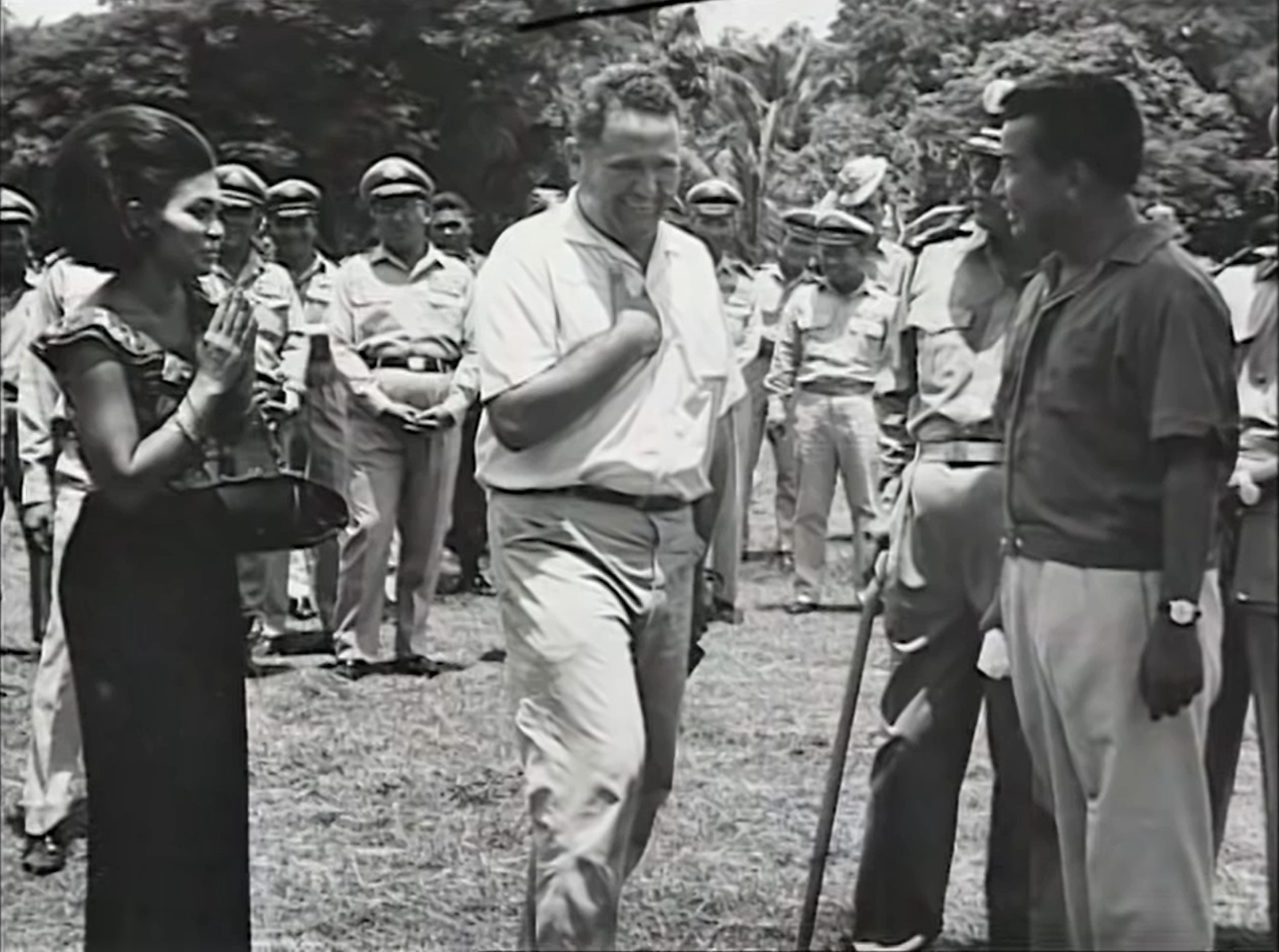Melanges sur l'Archéologie du Cambodge
by Bernard Philippe Groslier

Type: hardback
Publisher: Bulletin de l'Ecole française d'Extreme-Orient
Edition: 10th edition
Published: 1997
Author: Bernard Philippe Groslier
Pages: 287
Language : French
Close friend of King Norodom Sihanouk´s since childhood, Bernard Philippe Groslier, born in Cambodia the son of famous Khmerologist George Groslier, shares extensive notations on several archeological sites within the Angkor perimeter.
Detailed insights on archeological methodology in the 1960s, still a pioneer area in the discovering of the scope and complexity of Angkorian civilization.
Tags: archaeology, architecture, history, Angkor Thom
About the Author

Bernard Philippe Groslier
Son of Cambodia National Museum’s founder George Groslier, Bernard Philippe Groslier (10 May 1926, Phnom Penh — 29 May 1986, Paris) was the last French Curator of Angkor Monuments from 1960 until 1975. Archeologist and explorer, he has led the excavations and mapping process at Angkor Thom.
His book Angkor, Hommes et Pierres (Paris, 1968) remains a major reference for Angkor researchers. He also contributed several monographies on Khmer inscriptions, sculptures and architectural vestiges. Bernard Philippe Groslier was also a pioneer in developing the approach of Angkor as “hydraulic city”, studying the irrigation and water management.
A childhood friend of H.M. King Norodom Sihanouk, Groslier developed the archaelogical work in the temples surrounding Angkor, obtaining funds from General de Gaulle, whom he guided through the Angkorean ruins during the French leader’s historic visit to Cambodia in 1967. He protected as much as possible the archaelogical sites, and the families of Cambodian workers at Angkor, during the 1970 – 1974 civil war. At that time, some 3,000 refugees lived in Angkor and other temples, while 200 took refuge at the Conservation d’Angkor. Groslier himself suffered a severe knife wound.
He strongly believed that the future of Angkor preservation and research was to become a mission of the Cambodian people. In a lecture given at Sorbonne University in 1984, he expressed what he had thought for a long time: “Il est clair que nous avons d’une certaine manière, non pas délibérement mais concrètement, dépouillé les Khmers de leur passé. Ils n’en étaient plus les maitres (…) J´ai quand même passé vingt ans de ma vie à Angkor et (…) mes sentiments ont toujours été très ambigus (…) Il est clair que pendant 75 ans un pouvoir étranger, un pouvoir intellectuel étranger, des étrangers, ont trôné à Angkor, moi ayant été le dernier. Il est évident que cela a provoqué une sorte de dichotomie dans la pensée des Khmers vis-à-vis de leur passé.” [It is obvious that we have somehow — not deliberately but factually — stripped the Khmer people of their past. They were not the masters of this past anymore…After all, I spent 20 years of my life in Angkor and…my feelings have always been quite ambiguous…Clearly, for some 75 years, a foreign power, a foreign intellectual power, some foreigners, reigned at Angkor, and I was the last one of them. Obviously, this has triggered some sort of chiasm in the way Khmer people consider their past.]
See Bernard Philippe Groslier’s obituary in The Washington Post here.
B.P. Groslier as a young Cupid photographed in Phnom Penh (EFE0)
With H.M. King Norodom Sihanouk (and H.R.H. Sisowath Pongsanmony?) at Angkor in 1967 (EFEO)
At Henri Marchal’s funerals in Siem Reap, 1974 (EFEO)
At Angkor during the civil war, when he was allowed to go around the site only by bicycle (EFEO)




